Why Citrus Zone Nicotine Pouches May Have a Weird Color: Insights into Manufacturing, Chemistry, and Market Implications
As nicotine pouches continue to gain traction as a smoke-free, discreet, and convenient alternative to traditional tobacco products, flavor innovation has become a key market driver. Among the most popular profiles are citrus-based variants—lemon, lime, and orange—valued for their clean, tangy appeal.
However, a recurring concern in the industry is the unexpected discoloration in citrus-flavored pouches. B2B buyers, retailers, and brand managers have reported irregular hues ranging from faint greenish tones to oxidized brown patches. These visual inconsistencies not only affect shelf appeal but may also undermine consumer trust—even if product safety remains intact.
This guide explores the science behind these color changes, manufacturing touchpoints where they may occur, and practical solutions for maintaining quality and consistency in nicotine pouch production.
The Science Behind Color in Nicotine Pouches
What Are Nicotine Pouches?
Nicotine pouches are tobacco-free oral products that deliver nicotine through the mucous membranes in the mouth. A standard pouch typically contains:
-
Nicotine (natural or synthetic)
-
Flavorings (e.g., citrus oils, botanical extracts)
-
Fillers (microcrystalline cellulose, food-safe starches)
-
Humectants (e.g., propylene glycol, glycerin)
-
pH Modifiers (commonly sodium carbonate or bicarbonate)
These ingredients are mixed and portioned into moisture-balanced sachets. While generally stable, certain components—especially flavor agents—can react under production or storage conditions.
Why Citrus Flavors Are Chemically Sensitive
Citrus oils contain volatile compounds like limonene and citral, which are prone to:
-
Oxidation under heat or UV exposure, turning brownish or yellowish
-
Reactions with alkaline pH (from nicotine base or buffers), resulting in color shifts
-
Degradation over time when improperly stored, especially in humid or unsealed environments
This chemical sensitivity makes citrus variants more vulnerable to discoloration than mint or berry counterparts.
Where Color Changes Happen: The Manufacturing Journey
To trace the source of discoloration, we must examine each step in the pouch manufacturing process:
Step 1: Nicotine Preparation
Whether derived from tobacco or synthesized, nicotine must be purified and pH-balanced. Residual impurities or excessive alkalinity can create a reactive environment for flavor compounds—especially delicate citrus ones. This step directly impacts pouch stability and color retention.
Tip: Choose suppliers with pharmaceutical-grade nicotine and transparent COAs (Certificates of Analysis).
Learn more from Snuff Factory’s nicotine sourcing process
Step 2: Flavor Incorporation
Here, flavor oils or powders are mixed into the nicotine-filler matrix. If improperly handled:
-
Limonene oxidizes, especially when exposed to air or heat.
-
Citric acid, often used to enhance tartness, may destabilize when blended with basic compounds like nicotine salts.
Using non-stabilized or low-purity citrus flavors increases the likelihood of discoloration.
Step 3: Humectants and Binders
Humectants like glycerin or PG regulate pouch moisture. However, imbalanced moisture levels can accelerate microbial activity or trigger chemical breakdowns in sensitive formulas—another cause of browning or spotting.
Step 4: Packaging and Storage
Light, oxygen, and fluctuating humidity can trigger degradation post-production. Citrus-based products are especially vulnerable if not sealed in UV-resistant, air-tight packaging.
Manufacturing Solutions: Fixing the Color Issue
Brands and nicotine pouch OEMs can mitigate discoloration through several targeted strategies:
Option 1: Use Ultra-Purified Nicotine
-
Pros: Fewer impurities mean fewer unwanted reactions during mixing.
-
Cons: Higher material costs, especially with pharmaceutical-grade sourcing.
Option 2: Stabilized Citrus Flavor Ingredients
-
Pros: Reduced oxidation and improved shelf stability.
-
Cons: May alter aroma or taste, requiring reformulation to meet flavor expectations.
Option 3: Incorporate Natural Antioxidants
-
Pros: Compounds like vitamin E or rosemary extract protect volatile citrus oils.
-
Cons: Additive use must be declared—some consumers prefer “clean label” products.
Option 4: Optimize Packaging
-
Pros: UV-blocking films and vacuum sealing prevent post-production degradation.
-
Cons: Marginal increase in cost, especially for small-batch SKUs.
Explore high-quality pouch solutions at Snuff Factory
5. Market Application Scenarios: Who Should Act?
For Nicotine Pouch Brands
If your product line includes citrus flavors, invest in flavor and packaging R&D early. Avoid quality complaints by ensuring your formulas are lab-tested under real-world conditions (e.g., heat cycles, shelf simulation).
For Liquid Nicotine Wholesalers
Provide customizable pH levels and product consistency guarantees. Collaborating with flavor houses on compatibility data can be a value-added service for downstream OEM clients.
For Distributors and Retailers
Educate your B2C customers. A brief note on packaging or website FAQ addressing natural color variation can mitigate refunds and build trust.
6. Frequently Asked Questions (FAQ)
Q1: Is discoloration a safety issue?
Usually not. Color shifts are cosmetic unless accompanied by mold or odor. Still, discoloration may indicate degradation of flavor or improper storage.
Q2: How can I prevent oxidation in citrus pouches?
Use stabilized citrus oils, limit oxygen exposure, incorporate mild antioxidants, and invest in proper pouch sealing.
Q3: Are all citrus pouches prone to discoloration?
Not if the manufacturing and storage processes are optimized. Many leading brands have achieved consistent, bright-colored citrus pouches through quality control and ingredient upgrades.
Q4: Can nicotine purity impact pouch color?
Yes. Impurities or excess alkalinity in nicotine may react with citrus flavors, accelerating oxidation. Sourcing high-purity, pH-controlled nicotine is crucial.
Get sourcing support at Snuff Factory
Conclusion: Citrus Zone Color, Controlled
Inconsistent color in citrus-flavored nicotine pouches is a solvable issue—rooted in chemistry, processing, and packaging. By prioritizing ingredient quality, refining formulations, and leveraging protective packaging, brands can ensure their citrus offerings remain as appealing visually as they are in flavor.
Whether you’re a nicotine pouch manufacturer, liquid nicotine wholesaler, or B2B retailer, maintaining color consistency isn’t just a cosmetic goal—it’s a marker of quality your customers will notice.
Ready to upgrade your citrus formulations?
Connect with Snuff Factory


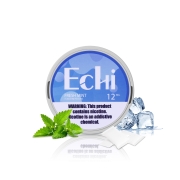

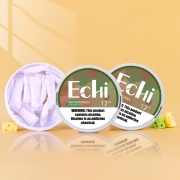
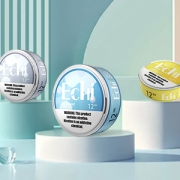
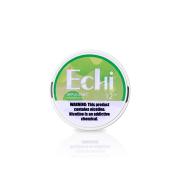
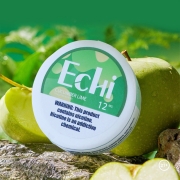
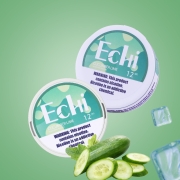


Leave a Reply
Want to join the discussion?Feel free to contribute!